Supporting children with Autism (ASC)
Boarshaw Community Primary School
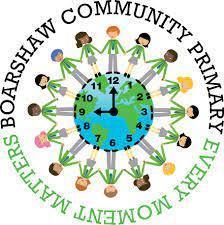
Information taken from
Rochdale Additional Needs Service (RANS)
Team for Autism and Social Communication (TASC
1 | Page
Contents
Teaching young children with Autism Page 3-7
Intensive interaction Page 8
Visual Supports- Now and Next Page 9-10
5 Point Scales Page 11-13
Art Therapy Page 14-15
Comic Strip Conversations Page 16-17
Multi-Sensory Learning (Maths and Spelling)
2 | Page
Page 18-23 PECS Page 24-25 Social Stories Page 25-29 TACPAC Page 30-31 The Autism Champion Page 31-33
Teaching Young Children with Autism
What is Autism? Autistic people may act in a different way to other people
Autistic people may:
● find it hard to communicate and interact with other people
● find it hard to understand how other people think or feel
● find things like bright lights or loud noises overwhelming, stressful or uncomfortable
● get anxious or upset about unfamiliar situations and social events
● take longer to understand information
● do or think the same things over and over Autism is not an illness
Being autistic does not mean you have an illness or disease. It means your brain works in a different way from other people.
It's something you're born with or first appears when you're very young.
If you're autistic, you're autistic your whole life.
Autism is not a medical condition with treatments or a "cure". But some people need support to help them with certain things.
Autistic people can live a full life
Being autistic does not have to stop you having a good life.
Like everyone, autistic people have things they're good at as well as things they struggle with.
Being autistic does not mean you can never make friends, have relationships or get a job. But you might need extra help with these things.
Autism is different for everyone
Autism is a spectrum. This means everybody with autism is different.
3 | Page
Some autistic people need little or no support. Others may need help from a parent or carer every day.
Some people use other names for autism
There are other names for autism used by some people, such as:
● autism spectrum disorder (ASD) – the medical name for autism
● autism spectrum condition (ASC) – used instead of ASD by some people
● Asperger's (or Asperger syndrome) – used by some people to describe autistic people with average or above average intelligence
It's not clear what causes autism
Nobody knows what causes autism, or if it has a cause.
It can affect people in the same family. So it may sometimes be passed on to a child by their parents.
Autism is not caused by:
● bad parenting
● vaccines, such as the MMR vaccine
● diet
● an infection you can spread to other people Autistic people can have any level of intelligence- Some autistic people have average or above average intelligence.
Some autistic people have a learning disability. This means they may find it hard to look after themselves and need help with daily life.
Autistic people may have other conditions- Autistic people often have other conditions, like:
● attention deficit hyperactivity disorder (ADHD) or dyslexia
● anxiety or depression
● epilepsy
4 | Page
Teaching Young Children with Autism
Use simple language
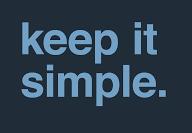
• Speak slowly and clearly.
• For example, rather than saying 'Tommy, put your coat on. It's time to go home', saying 'Tommy, coat' may be more effective. Point to the coat at the same time and use the child's name.
• Use sentences that are short and simple. Stress keywords if necessary and try to put them at the end of the sentence, e.g. 'It is time for a drink'.
Always address a child by their name first
• This is particularly important if the child is in a group.
• Young children may not understand that they are included, so you may need to address them by name or talk to them alone, then to the group.
Repeat instructions and allow additional processing time
• Repeat instructions if you don’t think they have understood you the first time
• Repeat the instruction in exactly the same way
• Allow extra time to process the instruction
Say what you want
• Give positive instruction - i.e. what you want them to do rather than what you don't want them to do eg ‘John, slow down' rather than ‘John, stop running'.
Use objects of reference
If you are telling a child it's time for a drink, show him/her the drink.
Helps reduce the frustration a child feels at not being able to communicate verbally.
Move towards the real object with a symbol.

5 | Page
Picture timetables
• Sense of structure to their day and make them feel more secure.
• A variety of types of pictures can be used - photographs, drawings, symbols etc. - depending on the child's understanding.
How to introduce
Example – Introducing nappy change symbol
• Place a picture of the nappy change in the bathroom.
• Show this to the child every time she goes there.
• Once she had associated the symbol with the nappy change then an identical symbol can be shown in the classroom when the staff member is going to take her there.
At the same time say ‘Zarah, toilet'.
Timers
Items such as sand timers can also be useful to help the child to understand how much time is left before the next thing happens, such as tidy-up time.
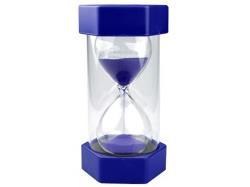
Preparing a child for change in this way will often help to reduce frustration or anxiety.
Difficulty choosing activities or toys
• Slowly build up the choices that are available to the child - initially offer them a favourite activity together with something they do not enjoy.
• Gradually build up to two desired activities.
Create a ‘calm’ area
• Low stimulus
• Use screens or room dividers
• Comfortable seating
• Use as a retreat or for individual/small group activities
6 | Page
One-to-one teaching of how to use functional toys
• One-to-one teaching of how to use functional toys may not necessarily teach a child how to 'play' but, through routine, they may learn to occupy themselves in a more constructive and appropriate way.

• Increase systematically to increase the child's ability to make choices. The more familiar a child becomes with a range of toys, the more they are likely to use them
Ideas for toys
Toys which are visually interesting:
• bubbles
• sand
• water
• play dough
• shape and colour matching or sorting toys
• jigsaws
• Jack-in-the-box
• Lego
• sensory toys
• videos
• books, especially those with flaps or items to touch, puzzle books, word books.
7 | Page
Intensive Interaction
• Naturally we want the child to share the world of the setting, to be able to interact with adults and peers and make the most of the opportunities and experiences available in your provision.
• However, in order to truly engage with the child to make this more likely, it helps if you are able to see the world from the child’s perspective so try to put yourself ‘in the child’s shoes’.
• This will give you a valuable insight into the way they think and behave, and makes it far more likely that the child in turn will engage with you and the world of the setting.
In order to ‘enter the child’s world’, you should:
• Follow the child’s lead.
• Join in with and imitate their vocalisations and actions .
• It may be possible to do this right next to the child, or, if the child finds this too uncomfortable, from a short distance.
• You should decide in advance which behaviours you will not copy, such as screaming or throwing things.
• Some practitioners have found that ‘mirroring’, has led to the child paying attention to what the adult is doing.
Next steps:
• Move on from simply copying the child to supporting what the child is doing, such as clapping in time to their actions, stopping when they stop.
• Practitioners can also support the child by providing a running commentary on what they are doing, either through speech or singing. This attaches meaning to the child’s actions and also provides a useful model of appropriate language and vocabulary.
Meltdowns
• Children have meltdowns because they are unable to communicate what they want or express their feelings in any other way.
• They may have difficulty in understanding what they are being told.
• The use of picture cards and simplified language should help.
8 | Page
Visual Supports
Now and Next
What is a Now and Next Approach?
Now and Next (First – Then) is a visual representation of two activities to be completed by the child A Now and Next (First – Then) Board is helpful in teaching children with ASC to follow directions and learn new skills. A Now and Next Board can motivate children to do activities that they do not like and clarifies when they can do what they like. A Now and Next Board lays the language foundation needed to complete multi-step directions and activities and to use more complex visual systems.
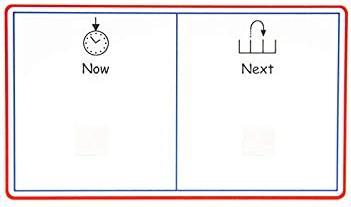
Who may benefit from a Now and Next Approach
● A child who has difficulty finishing one activity and starting another.
● A child who is reluctant to participate in a particular activity.
● A child with limited attention skills.
● A child who struggles to wait for something
What does it look like?
A now and next board (or 'First and Then') is a board with the word 'now' on the left side, and the word 'next' on the right side, with a box under both words.
The adult will usually put a picture of, place an object of reference, or write the task that needs to be finished in the 'now' box, and similarly a motivating activity in the 'next' box.
9 | Page
How to use:
● Place a symbol on each side of the board. It’s a good idea to place an activity that really motivates the child on the ‘Next’ side of the board. This acts as a ‘reward’, something for the child to aim for.
● Show the child the board, point to each symbol individually and support the child by saying “writing now….cars next”. Reduce language by using key words only.
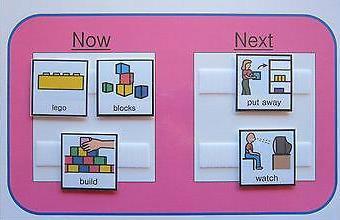
● When the child has engaged with the writing activity for some time the adult should inform the child by saying “writing finished… now cars” whilst pointing to the next symbol.
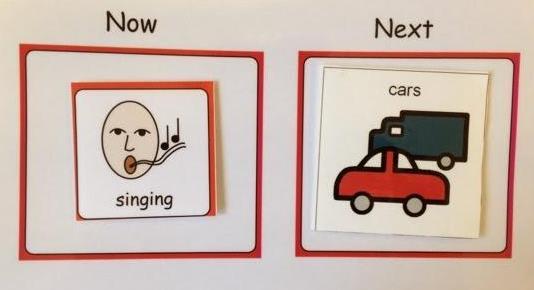
● Encourage the child to move on by supporting them to “post” the now symbol into a box or turning it over before moving onto the next activity.
Examples:
Key Points to remember:
● The‘next’ activity mustbe immediate.
● For some children the‘now’ activity will need to be explicit ie 5 calculations
● The‘next’ activity mustbe motivating enough to encourage thechild to complete thefirst activity.
● If you think challengingbehaviours may happen, begin by introducing theNow and Next Board for a task that thechild usually completes willingly and successfully.
Visual Timetables
We use Visual Timetables to support children with Autism in school. These timetables provide visual representation for daily tasks.


10 | Page
5 Point Scales
What is it?
A 5 Point Scale is a teaching tool that helps people recognise when their bodies are stressed and can give people ideas on how to manage their emotions.
The 5 point scale breaks down social and emotional feelings into 5 levels and using a number system rather than just spoken words to clarify each level of emotion or behaviour making it easier for the pupil to understand and recognise how they are feeling.
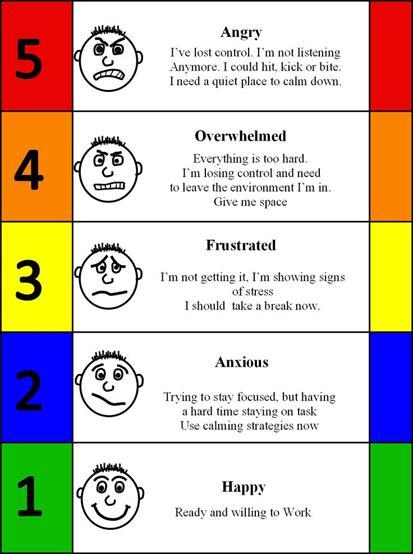
How to use a 5 Point Scale
● Determine the problem.
● Identify the skill or social concept the person needs to be taught to do it better.
● Break the concept into 5 parts – 1 being the smallest – 2 being the biggest (avoid good and bad).
● Use a social story to help the person understand how to use the 5 Point Scale.
● Review the scale with the person prior to the difficult situation.
● Use the scale in realsituations (is it portable if needed).
11 | Page
Examples of situations and concepts they can be used for:
Personal distance
Voice volume
Speed in the corridors
Fear
Who is a friend
Sexual behaviour
Energy level
Tolerance of others
Anger
How other people think
Rules
Personalised 5 Point Scales
Worrying
Losing or winning
Manners
Sadness
Emotions
What is funny
5 point scales are not generic and are tailored to the individual.Use something they like to obsess about. This gives the scale meaning and structure.You could use photographs and involve the child – make it personal to them.
Competition
Feelings and Outcomes
Develop a 5 Point Scale so pupils can assocaite their feelings with outcomes. They will begin to recognise what emotions look like and what will happen if they experience that feeling.
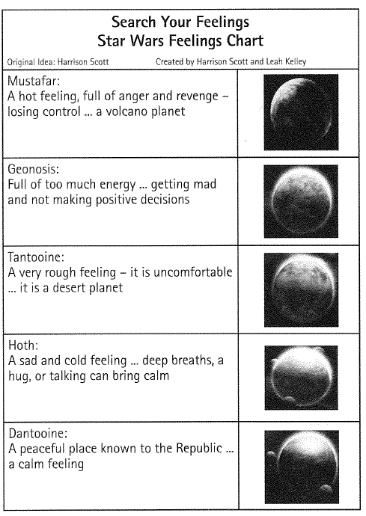
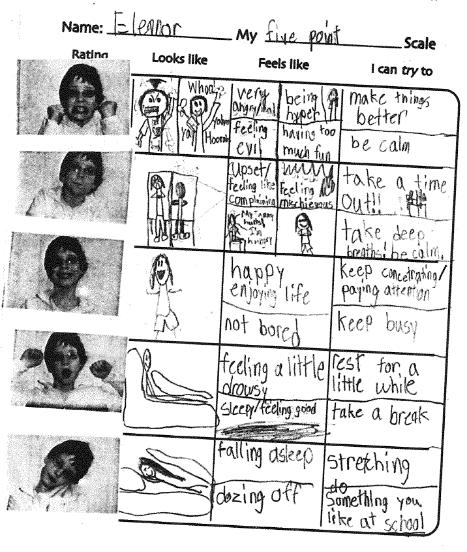
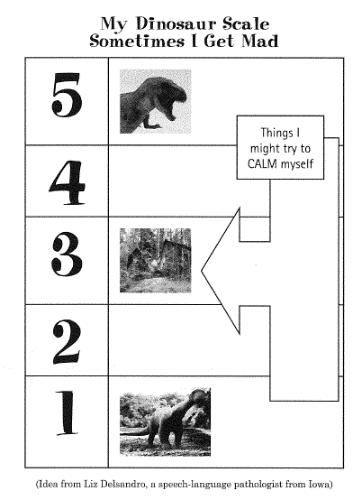

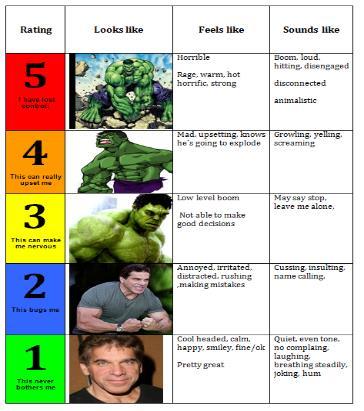

12 | Page
Reducing heightened levels of emotions
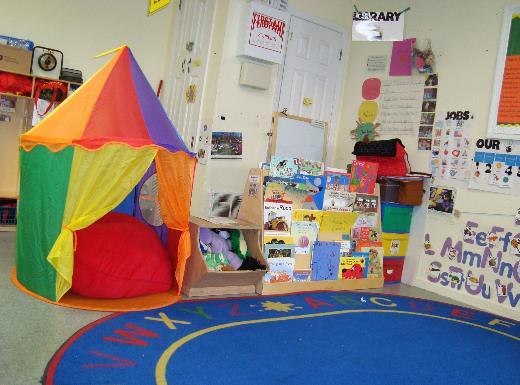
If a child is experiencing a high level of emotion (e.g. sadness, anger, anxiety) it is useful to create anarea where the pupil can self-regulate their emotional state. Calming areas or Calming Toolkits can help children find ways to manage emotions and change it into 'calm'. Come alongside the child and try things out, maybe recording what experiences help them to feel better.
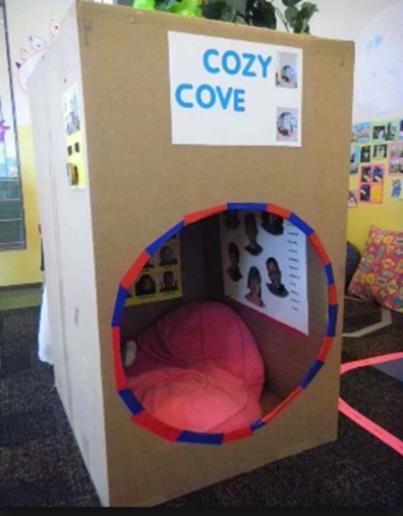
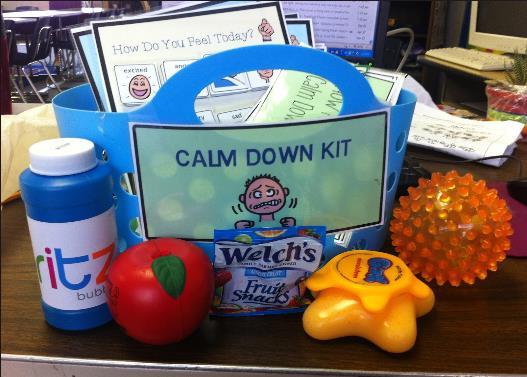
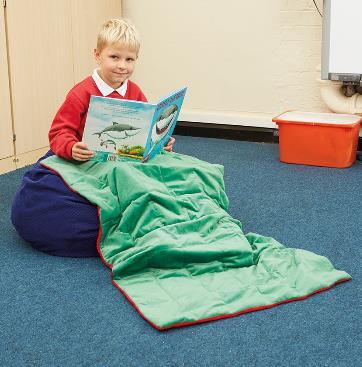

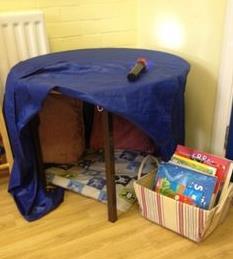
13 | Page
Art Therapy
ART as a FORM of RELAXATION
Art can be calming and therapeutic; it can lower stress hormones and be very helpful for soothing and self-regulating. Art can also be a means of expression and communication. It allows a way to share things through images, symbols and colour that otherwise cannot be expressed verbally.
The purpose of running the art sessions is simply to help a pupil reach a level of relaxation where they can comfortably talk to you. This can be a valuable tool when mentoring, counselling, or providing key work sessions.
N.B. Unless you are a trained therapist the intention of the sessions is not to interpret and analyse meanings of the work produced.
Tips for setting up the sessions:
● Provide one to one support (usually keyworker).
● Establish a quiet, fuss free area away from interruptions.
● Try to stick to the same room, adult and time each day/week (if possible) as predictability assists with relaxation. There may be a need for impromptu sessions also.
● Provide a range of resources and equipment.
● Use a folder labelled with the pupil’s name to keep all work safe and return this to the same safe place at the end of the sessions.
Some examples of genre:
14 | Page
Sketching Colouring Painting Drawing Scribbling/doodling
RUNNING ART SESSIONS
There are no limitations to the types and choices of art ideas really. Some children like to copy or take inspiration from books, the internet, pictures etc. Others prefer to draw patterns, their interests, favourite characters, pets, families etc. Japanese art (Anime) is a very popular choice. Some pupils quite simply enjoy to just colour in. There are some great resources available on the market.
Routine:
● Show your selection of resources and materials and give the pupil time to decide upon a preferred genre e.g. painting, sketching, colouring etc. Be mindful that this may change as the sessions develop.
● Allow the pupil to select their own choice of equipment e.g. paper, acrylic paints, pastels, gel pens, paint brushes etc. Clear away any resources not selected to avoid clutter but explain that they are always available.
● Help to prepare equipment initially e.g. paint pallet, water, paper, pens, and brushes. On future sessions this may be done independently.
● Always maintain a calm and comfortable environment. Keep a soft tone to your voice and carry out gentle movements.
● If necessary, reduce any focus on the pupil by joining in. For this always complete your own piece-never contribute to the pupil’s work.
● Begin by chatting or commenting on the art e.g. favourite colour, style.
● Encourage and give praise throughout.
● When a desired level of relaxation is met, the talking can begin. Sometimes the pupil may stop working as they talk-this is ok.
Try to remember:
● The sessions are not an art lesson.
● There is no expected standard and the work is not marked or judged.
● Not to psychologically analyse or look for any underlying meanings in the art work. However report any concerning images as a Safeguarding issue.
● It is not a programme of work and there are no rules around frequency or time (be mindful that pupils with an ASC like routine and schedules).
15 | Page
COMIC STRIP CONVERSATIONS
What are Comic Strip Conversations?
Comic strip conversations can be used to describe pictorially, social situations. They are particularly useful to debrief the child on the autism spectrum after a difficult situation. These children have very good visual skills, consequently pictures aid understanding.
After the incident the adult sits down with the child and draws (using very simple stick figures and line drawings) pictures to illustrate the child’s description of events.
The adult draws speech bubbles and encourages the child to describe what each person has said.
Then the adult draws thought bubbles to encourage the child to consider the intention behind the speech. The idea is to enable the child to analyse what has happened and have a clearer understanding of this.


Use the following questions to guide the child through the process
1. Where were you? (draw a location symbol to represent the place and a person to represent the child)
2. Who else was there? (draw a person / people)
3. What were you doing? (draw the relevant items or actions using simple symbols)
4. What happened / what did others do? (draw relevant items / actions)
5. What did you say? (use speech bubble)
6. What did others say? (use speech bubble)
7. What did you think when you said that? (use thought bubble)
8. What did others think when you said / did that? (use thought bubble)

● Some children will struggle with correctly identifying the thoughts and motivations of other people and may need help with this aspect but it is always good to involve them and give them some possible choices.

16 | Page
● If the child gives an obviously incorrect answer to what someone may have been thinking, then it is important to suggest a correct answer without discrediting the child’s answer.
Example
Key points

■ The pupil’s perspective is always accepted and another idea is introduce without discrediting the pupil’s response.
■ The objective is to achieve a balance between gathering insights into the pupil’s perspective and sharing accurate social information.
■ Can be used to discuss past, present and future events.
■ Once drawing has finished, conversations are summarised and solutions discussed. The new solutions are placed in writing and may also be illustrated.
17 | Page
Multi-Sensory Learning
Multi-Sensory Maths
What is it?
Multi- sensory maths is the use of sight, touch, hearing and movement and is good for all learners.
Examples of multi-sensory activities for maths:
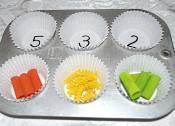
● Use beads, dried beans, pasta or cereal as manipulatives to represent numbers.

● Use paint or playdough to teach arrays.

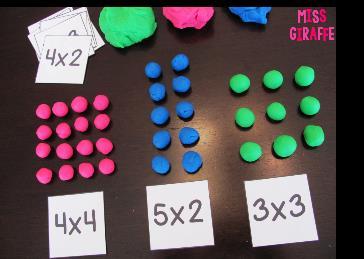
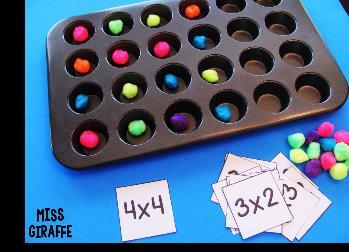
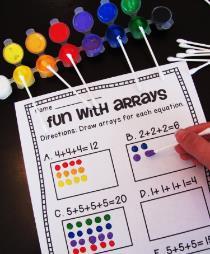
● Use games or blocks to teach times tables.

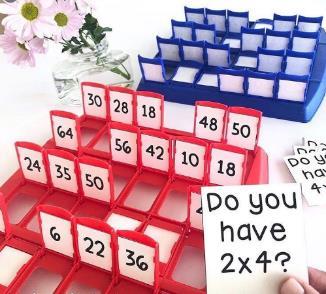
18 | Page
● Number lines and hundred squares. These don’t have to be on paper! Why not use games such as ‘Snakes and Ladders’, chalk to draw your own number lines, post it notes to sequence numbers.
● Use Lego or Duplo or food to teach fractions
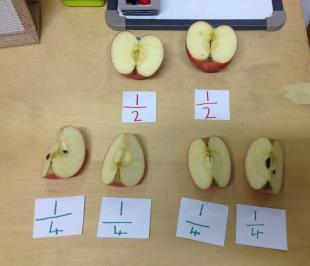

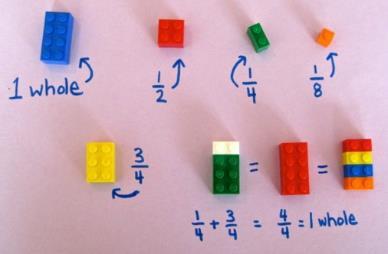
Auditory (hear)

● Tapping out numbers can help children to connect symbols to amounts as they ‘feel’ and ‘hear’ the value. This works well when working with multiples.
● Mnemonics and word links can be used to act as a memory aid to remember key maths concepts. Rhyming is helpful wherever possible.The use of songs can help memorise math rules.
● Playing musical notes can help children use grouping and fractions e.g. holding a note on a keyboard and asking “how many beats made the whole note?”

19 | Page
Kinaesthetic/Tactile (movement)

● Children can position their bodies to show shapes and angles. By using movement, children are more likely to be engaged and retain what they have learnt.
● Using hula hoops or labelled cones to group numbers based on their properties allows students to physically separate numbers and see the difference between them.
● Write large numbers on a large ball and pass the ball between a group of children. Each time someone catches the ball, they have to identify the number based on a question or complete a number operation with the two numbers their hands land on.
● Introduce tradition games. For example, label a ‘Twister’ mat with numbers and the children have to put their hand/foot on a number based on a given question. Use ‘Jenga’ bricks to retrieve a number sentence to solve. Use chalk to create a ‘Hopscotch’ grid to recall multiplication facts.

20 | Page
Multi-Sensory Spelling
What is it?
Multi- sensory spelling is the use of sight, touch, hearing and movement and is good for all learners.
Examples of multi-sensory activities for spelling:
● Jump and Learn: Write a letter on a piece of card/paper, using 6-10 letters. Tape the letters on the wall at a height that’s tall enough so you can still see the letters easily. Next, tell the child a word to spell and have them jump up and touch one letter at a time to spell the word…you could even use a trampoline if you have one!
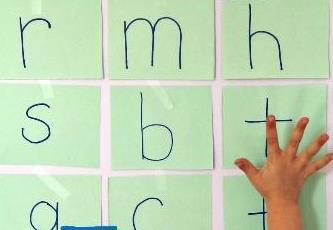
● Water Words: Use a squeeze bottle and squirt water onto a concrete floor to form big letter shapes or words. Next, encourage your child to trace and walk over the letters they have made and notice the shape of the letters.
● Move the writing off the paper! Get your child to write a word in different materials such as sand, salt, shaving foam
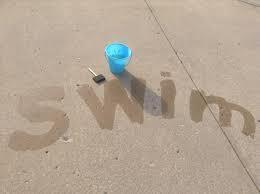
21 | Page
or paint! You could make a printing bag by filling a zip lock bag with paint or hair gel and tape the top, then children can use these to trace letters or words.

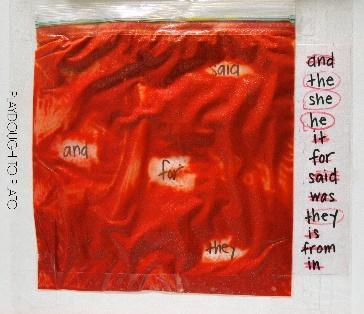
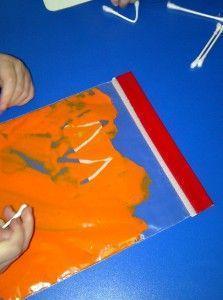
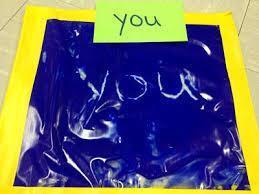
● Build the words: Use lots of materials to encourage your child to make the words. They could print the letters inkinetic sand, build a word using smarties or use pipe cleaners.
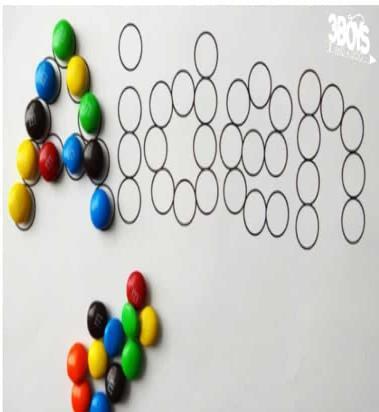
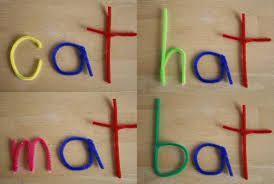
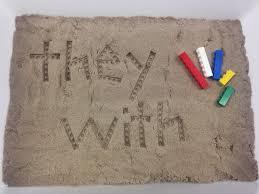
22 | Page
● Introduce traditional games to practise spelling key words. Thiscould be through Connect 4, Twister or even Dominoes! You could make your own Dominoes set using lolly pop sticks and key words. You could play by matching up starting letters or rhyming words (word families).


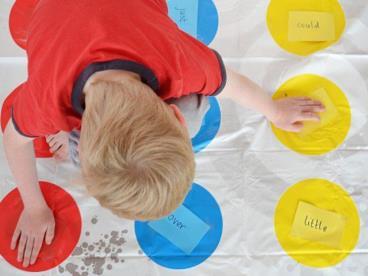
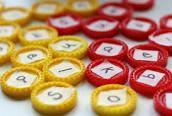
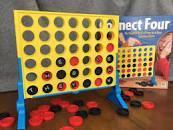
● Rainbow Writing: Select a range of pens, pencils, paints or chalk in a variety of colours. Ask your child to say a key spelling word, write the word saying each letter out loud. Say the word again and trace over the word in a different colour. Say the word again and repeat using a different colour. Repetition is key to build confidence in spelling and rainbow words! This could even be done in chalk on your driveway…
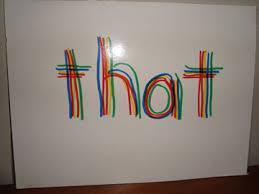
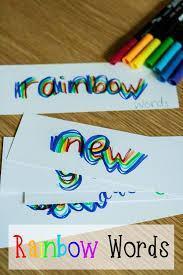
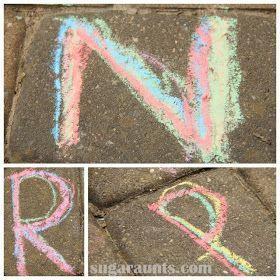
23 | Page
(PICTURE EXCHANGE COMMUNICATION SYSTEM)
What is PECS?
Andrew Bondy and Lori Frost initially developed PECs in 1994. They see PECs as being a unique communication training program which assists children in their acquisition of speech. PECs is divided into six phases.
PECS can be adapted to address
⮚ Social Interaction, by teaching that communication needs a person, a topic and another person to ‘hear’ about the topic
⮚ Communication, it gives a clear and easy means of communicating with or without language
⮚ Flexibility of thought and behaviour, by using PECs symbols, situations can be negotiated and information shared
THE SIX PHASES
· PHASE ONE
PEC's training begins with an assessment of the type of reinforcer, which the child with ASD likes. These can be food, drink or toys. Pictures are then made which will vary initially depending upon the child. They may be line drawings or they may be real laminated photographs of the objects. At this stage the aim is that upon seeing a 'highly preferred' item, the child will pick up the picture of the item, reach towards the trainer, and release the picture into the trainer’s hand.
The initial phase of PEC's training is therefore based on discovering what the child wants. This is not done by the trainers saying 'what do you want' but instead relies on two trainers, one of whom stands behind the child and physically prompts them to pick up and give the picture of the item, which the other trainer is holding. The item being offered is one that has already been identified as being of interest to the child. The child is therefore immediately rewarded for their first attempts to communicate.
· PHASE TWO
24 | Page
PECS
During phase two the child has their own communication board. They are able to pull a picture off this and then go to a 'communicative partner'and place the picture in their hand. Eventually the child will go and find a communicative partner even when the partner is not looking directly at the child. This is an important stage as many children with ASD fail to realise that they can get what they want from a person.
· PHASE THREE
Phase three involves the child selecting an item from a board containing many items. Some of these items are now 'non - preferred' items. The child has to choose the item they require and put that item in the hand of the communicative partner. When the child chooses an appropriate item they are given a great deal of social praise. At this point the size of the pictures can be reduced and the position of the pictures will be moved on the board to insure that the child is discriminating.
· PHASE FOUR
Phase four introduces the concept of 'I want'. The child now needs to put the picture of their choice onto the Velcro strip. The communication board will by now contain between 20 and 50 pictures. The child is by now working towards being able to give the strip / picture to a wide variety of communicative partners. They are also expected to move around the room to approach the communicative partner.
· PHASE FIVE
At phase five the student is able to spontaneously request a number of items and is ready to answer the question 'what do you want'. At this stage it is important to maintain spontaneous requesting but it is also accepted that this is the easiest of the phases to teach as the pupil is already exposed to many 'what do you want' requests within their environment.
· PHASE SIX
Phase six involves teaching responsive and spontaneous commenting. The student at this point is now ready to answer a variety of questions including 'what do you want?', 'what do you see?' 'what do you have?' and similar questions. The idea now being that the child will eventually be able to answer these questions when they are randomly asked. For this purpose various sentence strips are available for the child and time is put aside, during the day, to ask specific questions.
25 | Page
Further advice and support should be requested from a Speech and Language Therapist or RANS.
SOCIAL STORIES
What is a Social Story?
“Social Stories provide individuals with autism with accurate information regarding situations they encounter. For some students with autism, this type of written information appears to have a positive impact on their responses to social situations. Social Stories have also been used successfully to teach academic skills.”
-Carol Gray, 1994
How to write a social story
A Social Story is a Process
1. Picture the goal
♦ To teach social understanding over rote compliance
♦ To describe more than direct
♦ What to write
♦ The child’s needs determine the topic of the story
♦ The child’s perspective determines the focus of the story
♦ Gather information
♦ Tailor the text
♦ Each Social Story has an introduction, body and conclusion
♦ Each story answers “wh” questions
♦ Each story is writtenfrom a first or a third person perspective
♦ Each Social Story uses positive language, and states desired responses positively
26 | Page
♦ References to negative behaviours or responses are not mentioned e.g. “I am afraid of air hand dryers” (negative) “Sometimes air hand dryers make a noise” (positive)
The Design of a Social Story
1) Descriptive sentences e.g.
♦ My name is ………. I am attending a workshop.
♦ There are many people in the room.
2) Perspective sentences (describing thoughts and feelings of other people) e.g.
♦ I will enjoy listening to the speaker.
♦ The speaker will like it if the people listen to her.
3) Affirmative sentences ( they reinforce the meaning of surrounding sentences) e.g.
♦ The speaker likes it if people turn their cell phones off. This helps everyone who is listening to the speaker. It helps the speaker too. I will try to remember to turn off my cell phone. This is very important.
4) Directive sentences (They identify a possible response and/or gently direct behaviour) e.g.
♦ I will try to listen to the speaker and take notes.
♦ I will try to sit quietly next to my mum.
The Social Story Ratio
0-1 directive sentence
2-5 descriptive, perspective, or affirmative sentences
Teach with Titles
Each Social Story uses a title that states the “gist” or overall goal of the story, reinforcing the most important information. The title may be in the form of a question e.g. What will we do in the apple orchard?
Illustrations
27 | Page
Illustrations may enhance the meaning of a social story, especially for young non-readers.
Example: Eating at the table
I sit at the table when it is time for me to eat. Usually I eat when I am hungry. I sit at the table while I am eating. Mum likes it when I eat at the table.
Social Story Example Case Study
■ Josh attends a secondary mainstream school and is in year 8.
■ Josh has Asperger Syndrome, his special interest is the Civil War.
■ He often upsets staff and peers by saying hurtful things and this hinders his ability to make friends.
■ Josh feels the only reason someone should be upset with him is if he physically hurts them.
■ He finds it illogical to get mad at words as they do not cause actual damage.
Example: Josh got frustrated by Melissa and shouted “you are stupid” at her. This upset Melissa and she asked to move away from him. Josh became upset by Melissa’s response as he was only “telling the truth”.
Social Story created to support Josh
Sometimes other people say and do things that might make me mad.
Sometimes they give a wrong answer in class or break a rule.
When people do these things I sometimes get frustrated and say words that are unkind.
When I say unkind words, other people may think that I want to hurt them or that I don’t like them.
My teacher can help me by defining kind and unkind words.
28 | Page
I can try to remember not to use unkind words when I am mad.
Social Story Example:
29 | Page
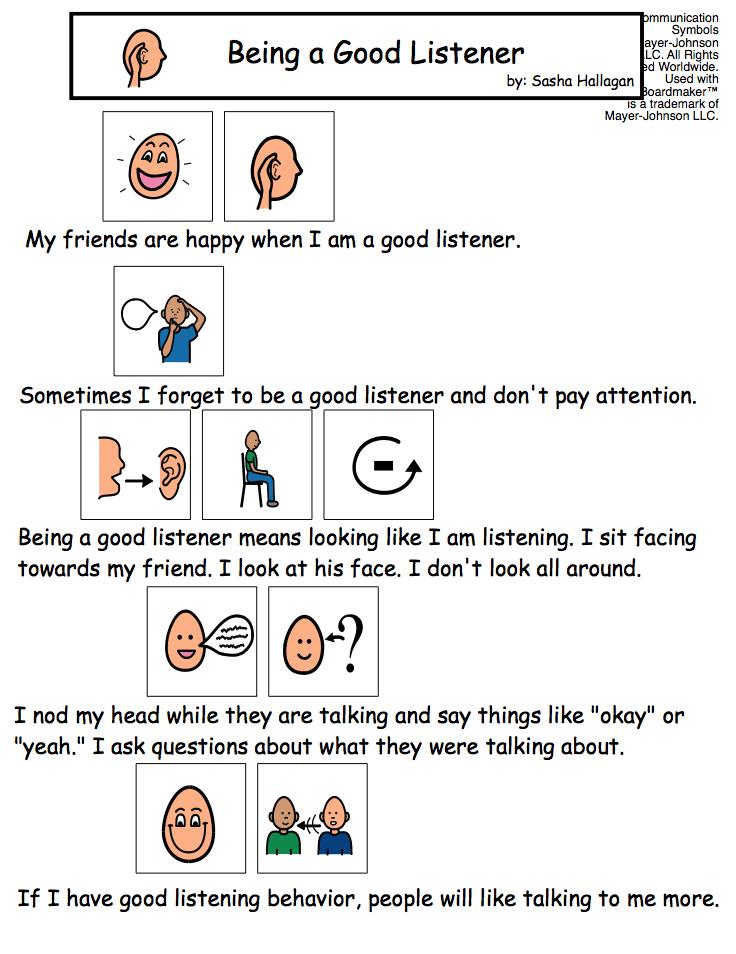
30 | Page
What is TACPAC?
Tacpac is a sensory communication resource using touch and music to help communication and social skills. Pupils may be on theAutism spectrum, have missing chromosomes, have global developmental delay, speech and language difficulties, attention and listening difficulties making it difficult for them to focus on aural messages, or be very wary of anyonecoming close,or touching.Over time, all these pupils benefit from Tacpac.
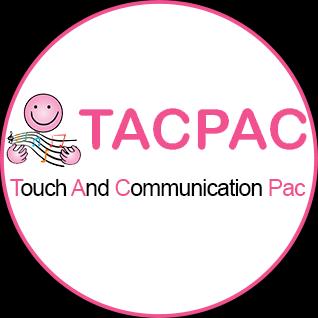
How does TACPAC work?
Tacpac combines thesense of touch and music through social interaction. Itis delivered via an interaction between 2 people – a giver and a receiver.Thesession is structured and takes place in an emotionally safe environment, clear of other sensory interferences.
Possible outcomes:
Reactive
● Becomes aware of tactile and auditory stimuli
● Begins to show pre-intentional and affective communication
● Shows physical, facial,or vocal responses thatyou can interpret as like, dislike, want, reject, known,unknown
Proactive
● Shows more deliberate responses to stimuli; wishes and intentions are easier to interpret
● Reaches for theobject and handles it
● Developing thecuriosity, spontaneity and confidence to engage with environment
● Uses theobject on him/herself
● Offers part of thebody (e.g. back) to thetactile object
Interactive
● Takes theobject from you to hold it
● Uses theobject on someoneelse
● Relates to you rather than just thestimuli
● Makes clear signs that s/he wants to repeat a particular activity,or miss one out
31 | Page
● Engages in turn-taking
Resources:
We recommend that Schools purchase Set 1 to begin with.
● TACPAC recommend you take about 6 months with set 1 ‘to allow for good, proactive communications to be created.’
Each Set contains
● 6 videos taking you through each activity
● Streamed music that has been specifically composed for each activity
● TACPACActivity Sheet
● Record Keeping Guide and Template.
● Access to the Tacpac Community Forum
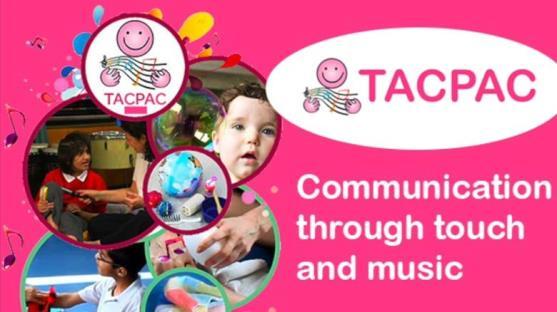
You will also need to purchase these resources for Set 1:

1 Fan
2 Wooden Spatulas
2 Dish Mops
2 Metallic Sponge Scourers
The Tacpac website has lots of useful information and resources.
https://tacpac.co.uk/
For further information contact RANS TASC.
32 | Page
Massage Oil Blanket
The Autism Champions
Who are Autism Champions?
Rochdale Additional Needs Service and Educational Psychology Service are working together to deliver a new strategic model for working with educational settings to meet the needs of our children and young people with ASC: Autism Champions. This will result in 1 or 2 members of our staff to be supported with CPD to develop their own knowledge and skills about autism.
The Autism Champions will:
1. Be responsible for co-ordinating support to meet the social emotional and learning needs of pupils in the school with ASC
2. Be an advocate for the children/young people, listening to their personal stories in order to gain valuable insight into their personal experiences
3. Provide a safe space for pupils to access drop-ins, emotional support, lunchtime clubs, scheduled intervention groups etc
4. Share knowledge and information with setting staff about individual pupils with ASC to enable consistent approaches throughout
5. Liaise with other professionals and agencies
6. Liaise with parents/carers and provide advice/support
7. Be responsible for facilitating transition plans for pupils.
8. Co-ordinate training for setting staff
Why do we need Autism Champions?
There are an increasing number of children and young people in our schools and colleges with a diagnosis of ASC. Many of these pupils find the expectations, demands and physical environments of schools extremely challenging. Literature highlights some of the problems experienced by pupils with ASC in our schools such as anxiety, bullying, social isolation and acute sensory sensitivities. It is suggested that many children/young people with ASC may be academically able to access the mainstream curriculum yet will probably require a range of social/emotional support systems in order
33 | Page
for them to meet their potential in school. Evidence suggests that many can be accommodated successfully if they are provided with the appropriate support structures. Research has also found that although many teachers say they are committed to the philosophy of inclusion, they do not feel they have the necessary training or support to provide effectively for these pupils.
We are accredited!
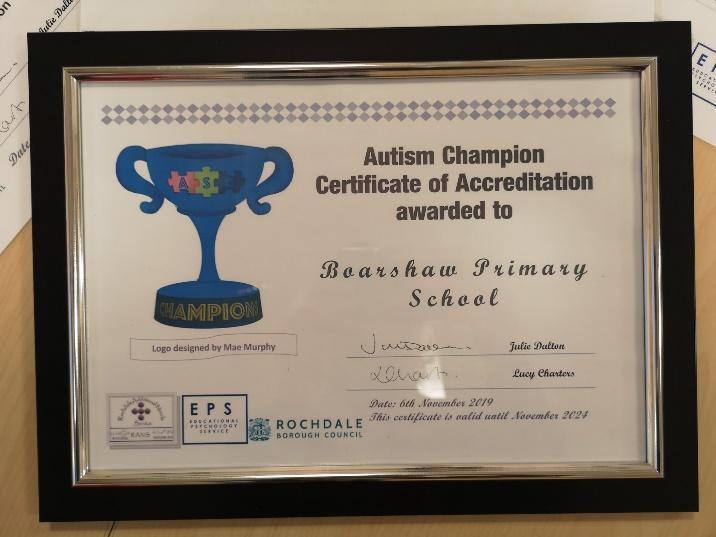
An accreditation review took place on 20th June 2019 and where we successfully met the threshold in 4 key areas, those being leadership, support for individual pupils, environment and resources, partnership and liaison with parents/carers. Our staff have worked really hard to undertake training and attend cluster meetings to help ensure we were meeting the threshold required. The details of the excellent feedback we received can be found on our school website.
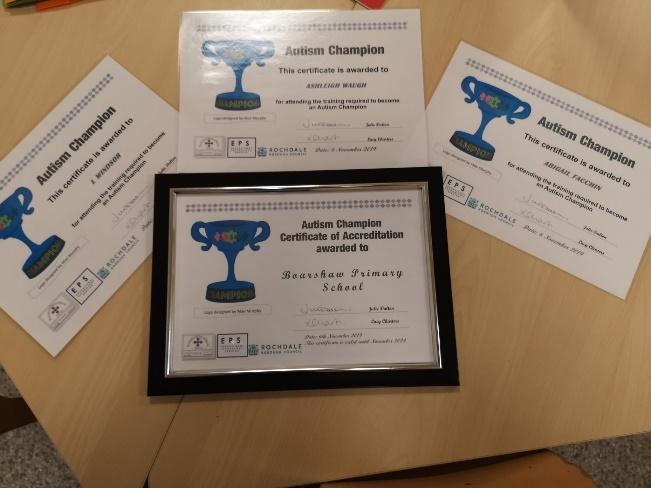
34 | Page
Autism Awareness Week
During Autism Awareness Week Boarshaw Primary School celebrate Autism in our school. We work alongside RANS and complete tasks to develop pupils understanding of Autism.
35 | Page
































































